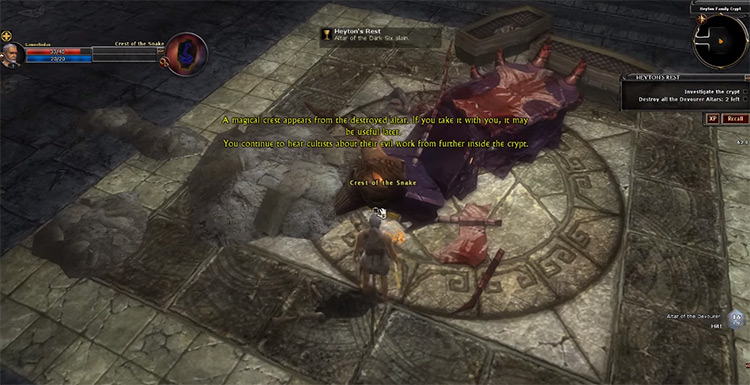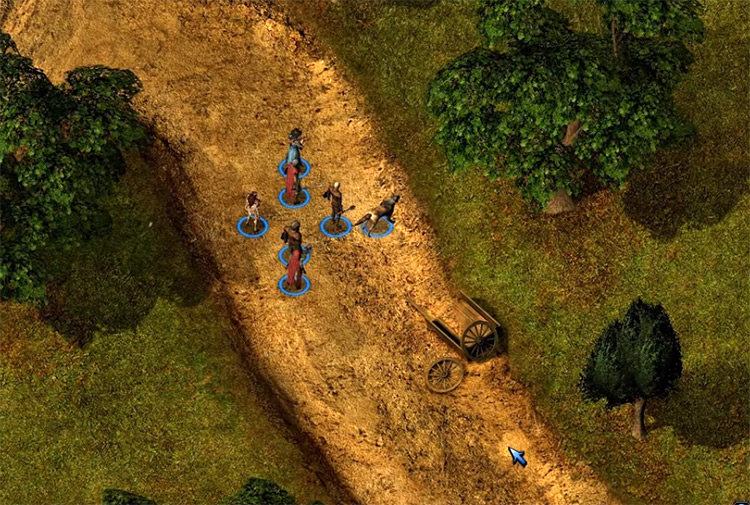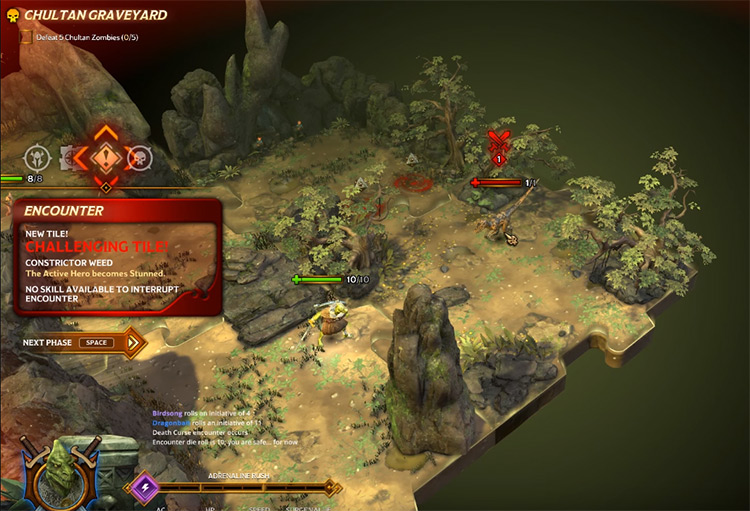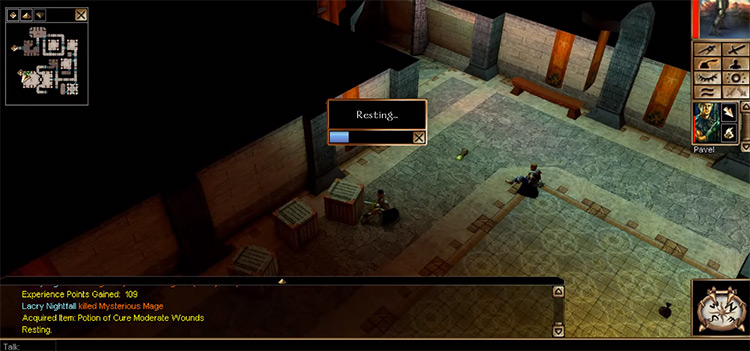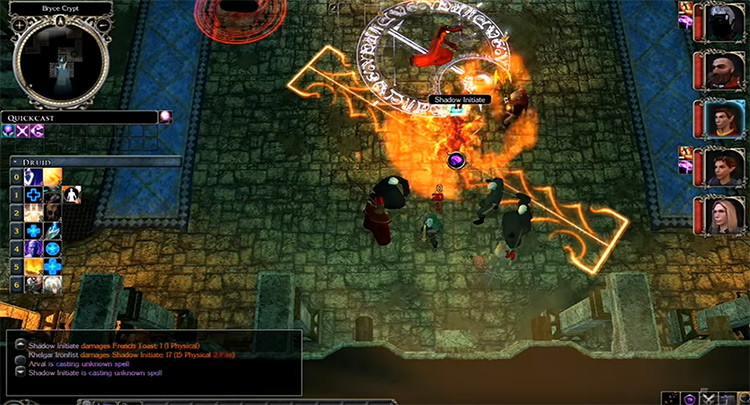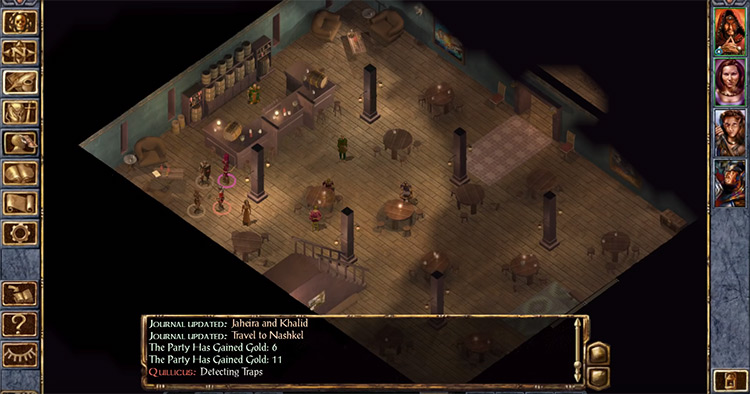Even its creator Gary Gygax could not have possibly predicted the reach and popularity that this pen-and-paper tabletop game would achieve. Naturally, its successes have allowed it to seep into different types of media—video games included.
Thus far, D&D’s video games have followed the RPG formula. These titles also tend to translate the tabletop’s intricate rulesets into engaging video game mechanics, where players can create and customize characters. Plus many titles on this list boast fantastic narrative and writing, thanks in part to a significant amount of published literature and tabletop content for D&D.
Let’s dive in and see which games are the most fun to play in the D&D franchise.
NOTE: Unless otherwise specified, the video games on this list are available only on PC (either Windows, Mac or Linux).
10. Dungeons & Dragons Online
Released in 2006, Dungeons & Dragons Online (DDO) is the franchise’s first major take at an MMO title. When it originally came out DDO scratched the online multiplayer itch with third-person perspective combat, cooperative quest-based progression, and customizable build paths. Its graphics were functional in quality, but they sufficed for the game’s basic premise. Unfortunately DDO hasn’t aged very gracefully in either graphics engine or gameplay. Still, it earns a spot on this list for being a decent first shot at an online D&D video gaming experience. On the bright side it also came before D&D as a franchise really took off through Internet fandom, so maybe there’s hope for another similar multiplayer title.
9. The Temple of Elemental Evil
Released in 2003, The Temple of Elemental Evil follows the RPG formula taken by D&D video game titles from the previous decade. However this game takes players away from the Forgotten Realms setting, which had become something of a favorite for D&D content. Instead we are taken to Greyhawk, the first world designed by Gary Gygax for the tabletop’s first edition. Temple of Elemental Evil uses turn-based combat, and many of its mechanics are based on the D&D 3.5 edition ruleset that released in the same year. This title’s fidelity to the tabletop’s rules serves as a particular highlight overall, though it does lack the same narrative punch and writing chops as some other video games in the franchise. Still a really fun game to play if you’re a big fan of D&D as a whole.
8. Tales from Candlekeep: Tomb of Annihilation
Released in October 2017, Tales from Candlekeep: Tomb of Annihilation is set in the Chult region of the Forgotten Realms, one of D&D’s flagship settings. The game’s main story follows the same plot threads as D&D 5th edition’s Tomb of Annihilation adventure module. Unlike many preceding video games in the franchise, Tales from Candlekeep shies away from basing its mechanics too wholly on any one edition of D&D’s ruleset. Instead combat follows an amalgamation of rules that resembles standard D&D fare adjusted particularly for a dungeon crawler focus. In that regard, the gameplay is more reminiscent of the turn-based combat seen in the XCOM series than previous D&D video games. Players get to choose the members of their main party from a set of premade adventurers, each with their own specializations that give you leeway to develop multiple iterations of tactics and combos. Typical of RPGs, adventurers progress by undertaking quests that reward experience, gold, items, all that fun stuff. The game also contains a map generation system that lends itself to multiple replays so it’s probably gonna keep you entertained for a while.
7. Neverwinter
Unrelated to other Neverwinter-themed titles (which we’ll come to later), Neverwinter is a free-to-play MMORPG available on PC, PS4, and Xbox One. The game takes place in the eponymous city of Neverwinter where players can undertake different quests and storylines. All the narratives and locations take inspiration from novels written in the Forgotten Realms setting. However recent content includes tie-ins to official modules published for the tabletop game. You can also experience player-created content through the game’s “Foundry” system. Neverwinter initially started with mechanics that took after D&D’s 4th edition rules. Gameplay involved players creating characters based on one of eight classes, each with its distinct roles and abilities(typical of D&D). Players could team together in up to five-man parties while completing content. With the advent of D&D’s 5th edition, however, the game rebalanced its classes in 2019 to better match the most recent edition’s ruleset. Like other MMORPGs, your characters grow more powerful by leveling up and acquiring better equipment. Though now you can do it in D&D-style!
6. Icewind Dale: Enhanced Edition
This isometric RPG takes place in the eponymous Icewind Dale, a region in D&D’s Forgotten Realms setting. Based on the Icewind Dale Trilogy by R.A. Salvatore, the game boasts fantastically-written dialogue and hours of content through quests and exploration. Players create and control an adventuring party of up to six characters. Each character receives special class designation and stats, which determine their effectiveness in combat, skill access, and spellcasting ability. You also improve these characters by earning experience points from quests and enemies. Black Isle Studios(who is responsible for other great favorites on this list) developed the original Icewind Dale game. Much later Beamdog took over its Enhanced Edition remake, which packaged in the original DLCs as well. The Enhanced Edition features improved graphics, UI changes, bug fixes, and gameplay tweaks. For both new and experienced D&D fans I’d say Icewind Dale will definitely scratch that classic RPG itch.
5. Neverwinter Nights: Enhanced Edition
The original Neverwinter Nights had been developed by Bioware with Beamdog taking over the game’s 2012 remake. This title contains hundreds of hours of content set in D&D’s Forgotten Realms. In addition to the main storyline there are numerous side-quests and subplots. Players receive rewards (such as experience and items) for completing content outside of the main questline, so there is a lot of incentive to partake in engaging different characters and exploring areas—a highlight of the Neverwinter Nights experience. The actual gameplay mechanics are mainly based on D&D’s original 3rd edition ruleset, which gives you many options in customizing characters. Practically everything you do in the game relies on chance, based on a 20-sided die roll. You have some control over the results based on character stats and abilities, but there will always be a level of randomness to the successes and failures. The game also has modding compatibility which adds more replay value through fan-made mods(and there are dozens of them). Also at this point there’s little reason not to go with the Enhanced Edition since it already contains the DLCs packaged in.
4. Neverwinter Nights 2
A top-down perspective RPG title brought to us by Obsidian Entertainment. This 2006 game provided audiences a taste of what this developer could do with the RPG genre(and some of you may know Obsidian for their much later work on Pillars of Eternity and The Outer Worlds). Taking place in the same setting as Neverwinter Nights, this sequel title features equally stellar writing and depth of content to its predecessor. The fact that this title improves on some of the first game’s flaws is what gives it the edge on this list. Neverwinter Nights 2 faithfully adapts D&D’s 3.5 edition ruleset to create an authentic tabletop gaming experience right at your computer. Players go through an intricate character creation system, much like the tabletop game, that lends itself to customization and optimization. This title also has three different DLCs, though only two were developed by Obsidian. But with these extra DLCs players who enjoyed the base game can opt into the expansions for some really fun additional content. On top of having mod support, Neverwinter Nights 2 (as with its predecessor) benefits from an active modding community so players can find a lot of replay value here as well. Highly recommend this if you’re big into PC gaming.
3. Baldur’s Gate: Enhanced Edition
Baldur’s Gate takes place in the ever-popular Forgotten Realms setting, specifically (and unsurprisingly) in the city of Baldur’s Gate. Players dive into an intricate story of intrigue and interfaction conspiracy that threatens to spark open conflict in the region. During the adventure your burgeoning hero can be joined by several colorful characters, and you may even encounter some big names of Faerûn fame, like Drizzt Do’Urden. The original and remake games’ mechanics take after the 2nd Edition Advanced Dungeons & Dragons ruleset. And just to clarify: the original 1998 game “Baldur’s Gate” is fantastic in its own right. In fact, it was hailed one of the best RPGs ever released… though I have to hand it to Beamdog for remaking the Enhanced Edition into a more superior title fit for modern standards. In addition to looking better, the Enhanced Edition stays true to many of the original’s gameplay mechanics. But it adds hundreds of quality-of-life changes along with content and player options. I mean, it’s fair to say gaming has changed a lot in the past 20+ years. The remake also contains the original Baldur’s Gate expansion pack, Tales of the Sword Coast, while having its own exclusive DLC called Siege of Dragonspear.
2. Baldur’s Gate 2: Enhanced Edition
Even in the realm of video games, the sequel curse exists—where a great work is followed by a not-so-great sequel. I’m happy to say Baldur’s Gate 2 kicks that curse to the curb. This succeeding game builds on what made the first one so memorable. Baldur’s Gate 2 takes the player deeper into Forgotten Realms, this time focusing on the country of Amn. Much like the original Baldur’s Gate, here you are plunged into an epic adventure on a scale to rival or even exceed its predecessor’s story. With different class choices you can eventually build up your character to be a walking army, accompanied by a cast of fleshed-out recruitable companions. Like its other D&D remakes, Beamdog’s take with Baldur’s Gate 2: Enhanced Edition polishes graphics with a more advanced engine along while adding many modern changes (such as functional multiplayer capability). The remake also maintains its fidelity to the 2nd Edition of Advanced Dungeons & Dragons. All the while the Enhanced Edition keeps to what made the 2000 original game such an impressive RPG: its great story, in-depth characters, and hundreds of hours’ worth of adventure.
1. Planescape: Torment
The top spot on this list indisputably goes to Planescape: Torment and its remake, Planescape: Torment: Enhanced Edition. I have to admit the remake does well to update graphics to more modern standards that most gamers expect. Not only is Planescape: Torment the best D&D game to have been made thus far, many would argue its place as the best RPG game ever made. Period. You play as an immortal amnesiac protagonist known as The Nameless One. Though based in the central hub of Sigil, the City of Doors, you will have to brave all the dangers and oddities of the Planescape multiverse (imagine every universe in existence). Your goal? To search your memories and understand how you came upon your immortal state. Of course, your quest won’t ever be as simple as that. And the game’s setting is a gift that can give one memorable highlight after another. One can only imagine the utter weirdness and hilarity that can ensue when you mix creatures from every nook of existence, sometimes of utterly different moral alignments. Luckily the writing is top-notch to keep up with the possibilities of the game’s multiverse. Planescape: Torment just hits all the ideal RPG beats you want in a game. A fantastic setting where you don’t always know what to expect. Complex and well-written, with tight dialogue and a gripping narrative. The chance to round out your party with compelling characters all with their own sub-plots to resolve. And lastly, this is a game system that encourages different builds and customization. Whether you’re new or a veteran of the RPG genre, Planescape: Torment is a must-play experience.
Special Mention: Baldur’s Gate 3
While Baldur’s Gate 3 hasn’t seen the light of day yet(as of this writing), I wanted to give it a special spot as possibly the most hyped D&D video game since Planescape: Torment: Enhanced Edition released. This title will be brought to us by Larian Studios, developers of the acclaimed Divinity: Original Sin game series. What we know so far is that it will take place (again) in Forgotten Realms, and gameplay will include some aspects of D&D’s 5th Edition ruleset. Fans should also get excited at the prospect of encountering the terrifying Mind Flayers, a notorious creature borne more of Lovecraftian mythos than typical tabletop fantasy. While Larian Studios and Wizards of the Coast have been keeping this title’s finer details under wraps, Baldur’s Gate 3 promises to be a must-have RPG-experience if its predecessors are anything to boast about. Keep your eyes peeled for this game’s release as we move into the 2020s.
